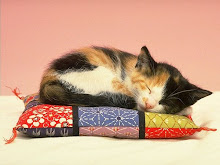THE INITIAL PURCHASE OF CARSIN AND
ITS BUSINESS IMPLICATIONS
New Owners, New
Methods
Château Carsin was purchased by Finnish wine enthusiasts in early 1990. At
the time, we did not have much experience either in making wine or selling it.
We felt that copying the local approach would not have been very successful in
the midst of 20,000 other Bordeaux producers ... Since then the number of
Bordeaux producers has fallen to about 11,000. As in so many other European wine
regions, the Bordelais put great emphasis on tradition. Wine is an integral part
of their culture. The importance of "typicity" and "terroir" (soil +
microclimate) are very evident in Bordeaux.
We had to find a different approach. When we purchased Château Carsin, New
World wines (from Australia, New Zealand, California etc.) were becoming strong
in the markets we were targeting. We established contacts with Australian winery
engineers, which opened up a whole range of possibilities. For the 1991 vintage,
a totally modern winery was ordered from A & G Engineering, a leading
Australian supplier. It was designed to employ the modern winemaking techniques
of Brian Croser at Petaluma Winery near Adelaide.
Money Talks
The price of land in Bordeaux varies considerably, depending on where it is
situated. On the one hand there is an image question - wine with the appellation
"Margaux" can fetch a higher price than just "Bordeaux". The main criterion in
valuing vineyard land is the quality of grapes it produces as well as the image
of the appellation. This depends greatly on the history of the winemaking area
besides many other things. In each vineyard, the different soils and
microclimates influence the way the grapes ripen. In plots where grapes ripen
early, there is less risk of autumn rains adversely affecting quality. Certain
soils produce more intense aromas. In the well-known Médoc, Graves and
Saint-Emilion appellations, land can easily cost between 30,000 and several
million euros per hectare.
Average yields in Bordeaux can be estimated at 7,000 bottles per hectare. At
a sales price of 3 € a bottle, income per hectare would be 21,000 €. At 8 €, it
would amount to 56,000 €, etc.
The turnover is relatively low in terms of investment. We decided that the
land producing the grapes should be cheaper, and that the added value should
come from production methods. At the moment, land around Château Carsin costs
between 15,000 and 25,000 € per hectare. We calculate one hectare of vineyard to
generate a turnover between 20,000 and 50,000 € depending on the quality of the
vineyards and the resulting wine.
White Wine is Made in the Winery
As a generalisation we could argue that producing white wines is more
technical than producing red wines and producing white wines could be regarded
more as an exercise in winemaking. We should not generalise too much, but it
could be said that by using modern techniques in the winery, a perfectly
acceptable wine can be made even from average-quality grapes. White wine can
also be made more in the style the winemaker wishes, and taking modern consumer
trends into account.
Commercial Approach
New World winemaking philosophy also puts more emphasis on the commercial
approach from the very start. This filters down to affect the types of wines
that are produced. Even though adapting the style of red wines is not as easy as
for whites, in both cases commercial factors play a very important part in
defining the finished product.
During the 1990's we laid down detailed specifications for each type of wine
that we produce, including such matters as style and grape composition, yields
per hectare and the quality and the maturity of the fruit, main markets besides
other things.
main |
sidebar
BORDEAUX : A NEW-WORLD WINERY IN THE HEART OF TRADITIONAL EUROPE
Designed by SkinCorner Free Blogger Templates | Image from Wallcoo
Sponsored by Stylistbackgrounds | Wordpress Themes
Copyright © 2011 Flower Girl
Sponsored by Stylistbackgrounds | Wordpress Themes
Copyright © 2011 Flower Girl
